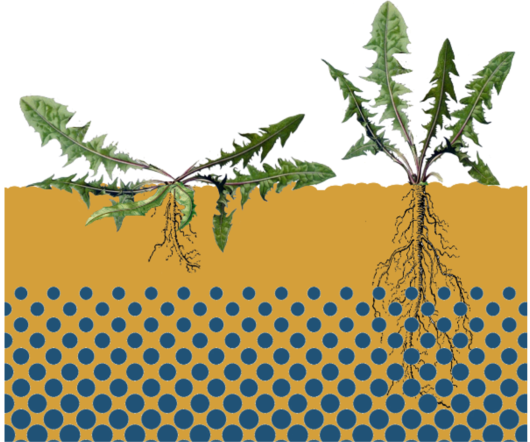Deep roots help crops to survive - but not necessarily to thrive
When a drought hits, there is often still water in the deeper soil. If crops have deep roots, they can access this water. Chicory is such a crop, and it takes up substantial amounts of water from the deep soil; however not enough to escape a drought.

Water scarcity is a major challenge in food production worldwide. And if it wasn’t bad enough already, the drought challenge is reinforced by climate change. Drought can take many forms. It can be more or less severe and it can hit at different time points during the growing season. Under some kinds of drought, growing crops with deeper roots could be an advantage.
Many crop production systems rely on stored soil moisture from precipitation during a wet season. So when there is a surplus of precipitation the soil column is recharged, and when the precipitation cannot keep up with the evaporation of water from the soil and the transpiration from the plants the topsoil starts to dry out. If a crop has shallow roots it will simply run out of water.
Growing crops with deep roots could be a winner strategy, because the deep roots have access to the moist soil deep down. The question is, how good deeper rooted crops actually are at utilizing deep water and nutrient pools.
Can chicory thrive during a drought?
Chicory is a perennial crop grown mainly as a fodder crop but many might know it from the supermarket’s vegetable section under the name endive or as a blue flowering wild plant on roadsides in Europe. Chicory has very deep roots, and it can reach more than 3 meters depth in a single growing season. That should be a good starting point for coping with drought.
In the Deep Frontier project we looked into how much water chicory was taking up from different soil layers both under well water and under drought conditions. We found that chicory had substantial water uptake from 1.7 meters depth - and even from 2.3 meters depth the water uptake was considerable. This definitely helps chicory to survive when a drought hits.
However we also found that when the topsoil became dry, and only little water could be extracted here, the water uptake from the deeper soil layers did not increase to compensate. With a lower water uptake from the topsoil during drought, and no increase in the deep water uptake, this means that chicory had in total to rely on less water.
 Chicory is a native to Europe, and often seen on roadsides. However it is also grown for both fodder and food. Photo: Camilla Ruø Rasmussen |
|---|
Plants need water to grow. When water is scarce they can survive, and some plants can even regulate their water use to save water for later. But plant growth is closely linked to water use, so while plants can survive on little water they don’t thrive. To produce food and fodder we need our crops to grow large, so in a production context surviving is not enough.
Plants are different, so the fact that chicory in our experiments was not able to escape the drought, does not mean that this is the case for other species. It could also be that chicory would be able to extract more deep water during a second growing season,where the deep root system has had time to extend and mature. Future studies will focus on why deep water uptake is somehow limited, and how other species than chicory utilize deep water during drought.